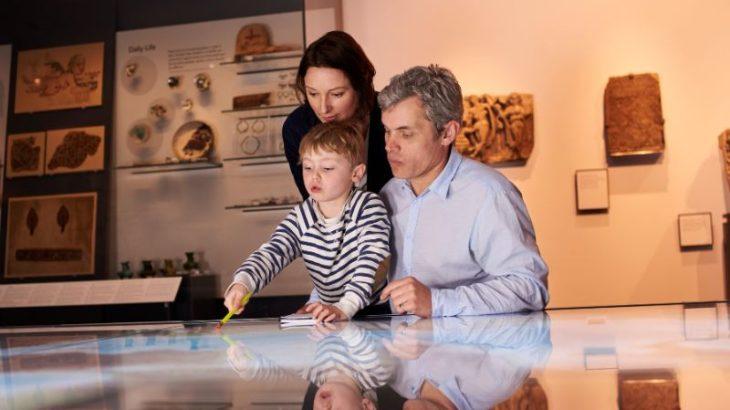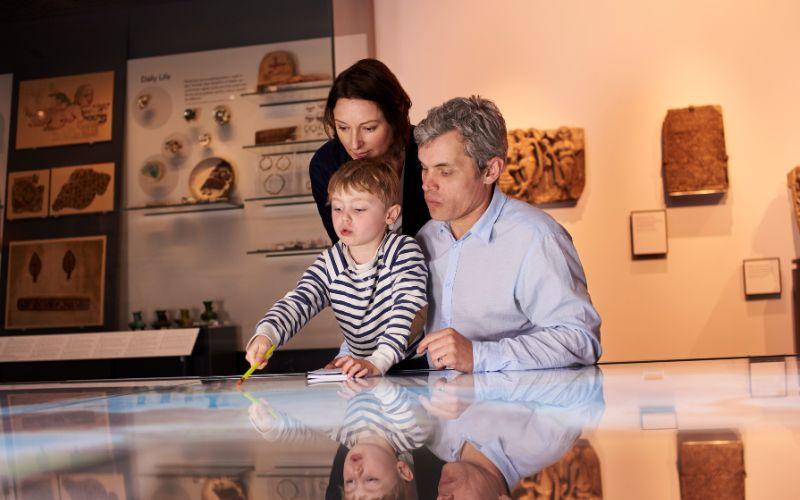
Sustainability is a hot topic across all industries! The museum industry is no exception, but what exactly is the museum industry doing to become more sustainable?
More sustainable practices across all industries, including art and culture, are needed. Museums are vital; they preserve cultural heritage, provide jobs, and offer a world of education. A lot of the time, with no entry fee! But they are just as responsible for reducing their carbon footprint and conserving energy as anywhere else. In this article, we look at what the museum industry is doing to become more sustainable.
The Green Museum
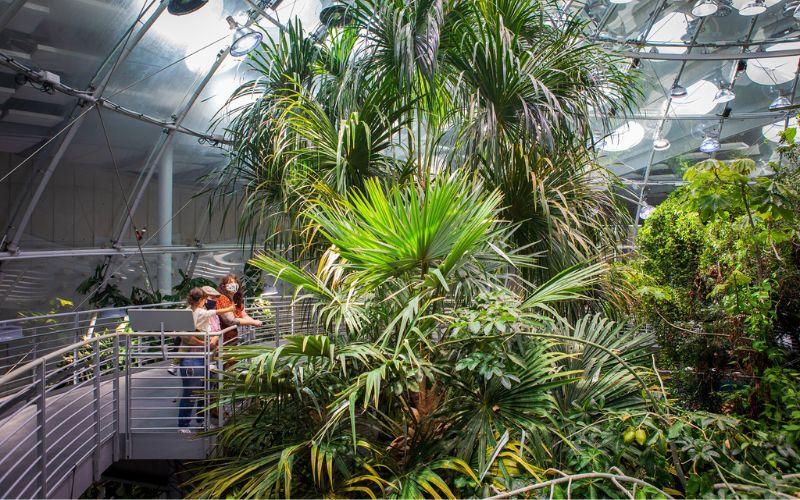
Have you heard of ‘Green Museums’? These museums incorporate sustainability into their operations as much as possible, using their collections to educate visitors about the environment and promote eco-consciousness.
There are several characteristics that you can incorporate to become a Green Museum. These characteristics include:
- Using eco-sustainable or bio-architecture.
- Implementing a 100% renewable energy system.
- Energy-saving light bulbs such as LED lighting are also used.
- Reducing pollution and waste
- Recycling and reusing materials.
- Promoting sustainable mobility by providing discounts for public transport or biking.
- Implementing green innovations such as electric vehicle charging stations and digital tickets.
- Offering educational initiatives for both staff and visitors focused on sustainability.
This is just the start, as there are many more ways to become a Green Museum.
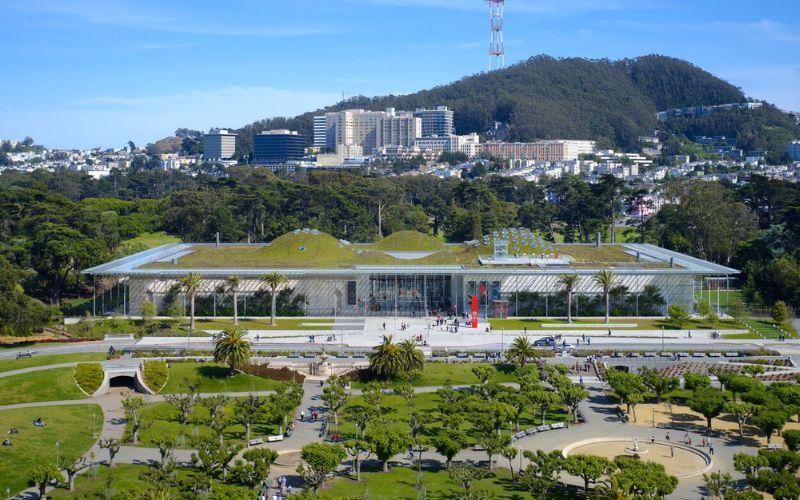
The California Academy of Sciences
The museum, known as The California Academy of Sciences, has earned platinum LEED certification and has set itself a goal of becoming the world’s most environmentally friendly museum. Designed by Renzo Piano, the building was opened to the public in 2008 and boasts various sustainable features, including the 2.5-acre Living Roof.
Solar panels surround the Living Roof, capturing excess stormwater, providing insulation to reduce energy consumption, and converting carbon dioxide into oxygen. The roof is home to approximately 1.7 million plants, which makes it a sanctuary for birds, insects, and other creatures.
The Academy is actively involved in raising awareness about biodiversity and is part of several conservation initiatives, including a program to breed endangered African penguins.
Their mission is to promote biodiversity research and exploration, environmental education, and sustainability not just in San Francisco but worldwide. It’s a fantastic example of what museums can achieve!
The museum industry can contribute to a more sustainable future
Becoming more sustainable doesn’t require museums to undergo extensive renovations or make huge changes in their operations. Small steps are an excellent starting point.

Recycle and reuse
Let’s start with the easiest! Museums can reuse and recycle to reduce environmental impact. Recycling and reusing materials can save energy, reduce waste, and conserve natural resources. Additionally, recycling and reusing can save money and reduce costs associated with waste disposal and purchasing new materials.
Find what drains the most energy
This can be achieved by conducting an energy audit to determine where energy is wasted. Some major energy drainers in museums include heating systems, air conditioning units, audiovisual equipment, and lighting left on overnight.
Many museums implement energy-efficient measures to address these energy drainers, such as installing programmable thermostats and LED lights and switching off equipment when not in use. Identifying and addressing energy drainers can significantly reduce energy usage and save on costs.
Green cleaning
Investing in green cleaning products is another way museums are environmentally conscious. They are choosing products made using natural and biodegradable ingredients that are less environmentally harmful than traditional cleaning products.
Additionally, green cleaning products are safer for staff and visitors, as they are less likely to contain harmful chemicals that could cause respiratory problems or skin irritation.
Sell eco-friendly merchandise
Museum gift shops are an excellent way to promote sustainability and raise awareness about eco-friendly practices. Many museums have started to offer eco-friendly merchandise in their gift shops, including products made from sustainable materials and those that promote eco-conscious living. For instance, you can find reusable water bottles, tote bags made from organic cotton, bamboo utensils, and other eco-friendly items.
One of the steps taken by the museums is the removal of plastic bags from their shops. This eco-friendly move reduces plastic waste and encourages visitors to use reusable bags or paper options.
By offering these products, museums can encourage visitors to make small changes in their lives and contribute to a more sustainable future. Additionally, they can serve as a reminder of the importance of sustainability long after the museum visit.
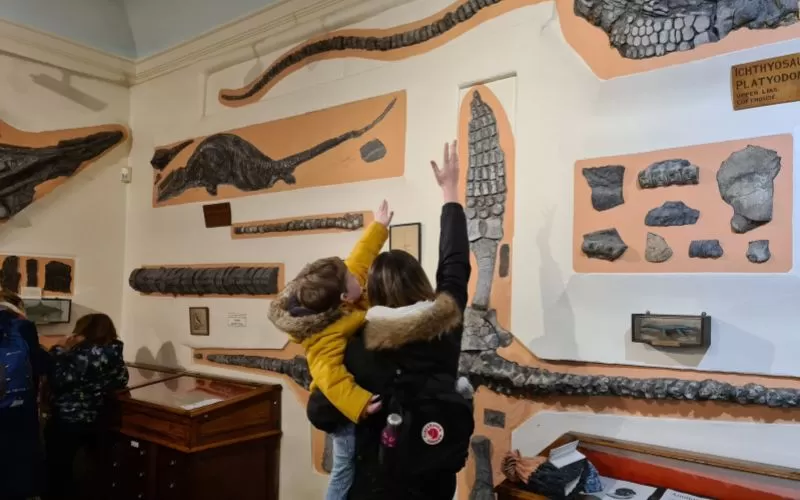
Spread the word!
Museums worldwide are increasingly hosting eco-friendly events to encourage a sustainable future. These events can take many forms, including exhibitions, lectures, and workshops on sustainability, climate change, and environmental protection. They also feature a range of interactive activities that help visitors understand the importance of reducing their carbon footprint and adopting more environmentally friendly practices.
Some museums are taking a particularly creative approach to eco-friendly events. For example, the American Museum of Natural History in New York City has featured a special exhibit called “Our Senses: An Immersive Experience,” encouraging visitors to explore their relationship with the natural world through hands-on activities.
Many museums outline their sustainability plans, targets and progress online, just like National Museums Liverpool.
Get the staff involved and choose sustainable uniforms
The success of sustainable efforts largely depends on dedicated staff members. It is crucial to remind museum staff about the significance of sustainability and encourage them to make efforts towards it in their everyday work.
Many museums are achieving this by conducting training sessions and workshops on sustainable practices and raising awareness about the impact of our actions on the environment.
Introducing sustainable uniforms and sustainable practices in the workplace, such as recycling and reducing waste, will help staff to adopt them in their personal lives as well.
Changing behaviour is as powerful as any technological improvement.
It’s no longer enough for museums to serve preservation—they must now also focus on conservation. We have loved writing this article; it is great to see museums using their unique platforms to raise awareness about environmental issues. They are inspiring visitors to act towards a more sustainable future.
We provide sustainable workwear you can trust
For more than a decade, A.M. Custom Clothing has been providing custom workwear to businesses and brands in the UK and worldwide. We pride ourselves in delivering retail-quality personalised workwear that stands out.
We offer thousands of ethical and organic product variations for your custom clothing order. Our eco-friendly clothing ranges cover every budget, including Fairtrade clothing and recycled options.
Click here for our most popular sustainable workwear products.
